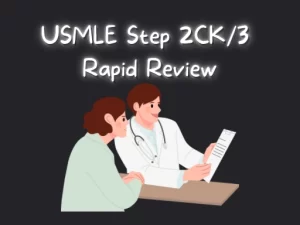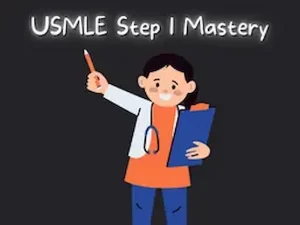When pursuing a medical career in the United States, one of the most critical stages is the residency application process. The difference between the Match and SOAP is essential for applicants, especially international medical graduates (IMGs). This blog will clarify the USMLE Match vs SOAP, shedding light on both processes and how they serve different purposes in matching medical students with residency programs. Understanding these distinctions can significantly impact your chances of securing a residency spot in your desired field.
The Match is a formal process where applicants are matched to residency programs, while SOAP (Supplemental Offer and Acceptance Program) serves as a backup for unmatched applicants, providing them another opportunity to find a residency. Through this blog, we will explore the Difference between the Match and SOAP, and how each process works, particularly for IMGs. Whether you’re a U.S. medical student or an IMG, understanding the differences and procedures will help you navigate these critical stages successfully.
What is the Difference Between the Match and SOAP?
The Difference between the Match and SOAP is significant, especially for those unfamiliar with the process. USMLE Match vs SOAP refers to two different stages of the residency application process. The Match is the primary mechanism that pairs applicants with residency programs, while SOAP is a secondary option for those who do not secure a position in the Match. Applicants submit their preferences for residency programs during the Match, and a computer algorithm matches them with available positions. However, if an applicant is not matched during this process, SOAP comes into play. SOAP allows unmatched applicants to apply for remaining positions in residency programs. It provides another chance to secure a residency but with stricter timelines and fewer available spots.
What is The Match?
The Match is the central process that matches medical school graduates with residency programs across the U.S. It involves a structured timeline and steps that all applicants must follow.
Here’s a breakdown of how it works:
- Registration: Applicants and residency programs register with the National Resident Matching Program (NRMP).
- Application: Medical students apply to multiple residency programs, ranking them based on preference.
- Algorithm: The NRMP uses an algorithm to match applicants to residency programs.
- Results: Applicants receive match results, revealing where they will begin their residency training.
Key points about the Match include:
- It is a highly competitive process with strict deadlines.
- Match vs SOAP for IMGs: International medical graduates can participate in the Match but may face more challenges due to limited spots.
- The Match aims to create a fair and balanced distribution of applicants to residency programs.
What is SOAP?
SOAP stands for Supplemental Offer and Acceptance Program, a secondary opportunity for applicants who do not match in the primary Match process. The difference between the Match and SOAP lies in the timing and the available opportunities. SOAP allows unmatched applicants to apply for any remaining residency positions that are unfilled after the initial Match.
Here’s how it works:
- Eligibility: Only unmatched applicants who have participated in the Match can apply to SOAP.
- Application: SOAP is conducted through the ERAS (Electronic Residency Application Service) system, and applicants can apply for unfilled positions.
- Offers: Applicants receive offers for available positions and must respond quickly.
Key points about SOAP include:
- It offers a limited number of residency positions, with fewer slots available than in the Match.
- The process is fast-paced and has strict deadlines.
- SOAP is particularly important for Match vs SOAP for IMGs, as it provides another opportunity for international medical graduates who may face greater difficulty in matching during the primary Match process.
Key Differences Between Match and SOAP
| Feature | Match | SOAP |
| Eligibility | All applicants who register for the Match | Only unmatched applicants from the Match |
| Process | Algorithm-based matching system | Applicants apply for remaining unfilled spots |
| Available Positions | Large number of residency programs | Limited, unfilled positions after Match |
| Timing | Results are released after a lengthy process | Offers are made quickly after the Match |
| Purpose | Main process for securing a residency program | Backup option for unmatched applicants |
| Impact for IMGs | Highly competitive for international graduates | Provides a secondary chance for IMGs |
Understanding the Difference between the Match and SOAP helps applicants decide where to focus their efforts in the residency application process.
What Programs Can I Apply To?
During the Match, applicants can apply to a wide range of residency programs across various specialties. Whether you are interested in internal medicine, surgery, or pediatrics, the USMLE Match vs SOAP process allows applicants to rank and apply to multiple programs. It’s important to carefully research and select programs that match your career goals and interests. However, if you’re unsuccessful in the Match, SOAP provides a second opportunity to apply to unfilled positions. In SOAP, only a limited number of programs remain available, so applicants must act quickly.
How to Choose Programs?
When applying for residency, whether through the Match or SOAP, choosing the right program is crucial. For the Match, you should consider several factors such as program reputation, location, faculty, and available resources. Carefully research each program’s requirements and culture before ranking them. For Match vs SOAP for IMGs, the process can be more competitive due to fewer spots, so focusing on programs that are IMG-friendly may increase your chances.
How Does SOAP Match Work?
SOAP is a backup opportunity for applicants who do not match during the primary Match process. It works by allowing applicants to apply for any unfilled positions in residency programs. After the Match results are released, remaining programs with open spots are made available to SOAP applicants. Applicants can then submit applications, and offers are extended on a first-come, first-served basis. Speed and preparation are crucial in SOAP, especially for Match vs SOAP for IMGs, as the remaining slots are limited.
SOAP Match Statistics
SOAP success rates vary depending on the specialty and applicant group. For unmatched U.S. graduates, the chances of securing a position in SOAP are higher than for international medical graduates (IMGs). SOAP match statistics show that only a small percentage of unmatched applicants successfully secure a residency position in SOAP. In particular, Match vs SOAP for IMGs can be challenging, as fewer positions are available for international graduates.
Conclusion
The Difference between the Match and SOAP is critical to understanding the residency application process. Whether you’re participating in the USMLE Match vs SOAP or aiming for a position as an IMG, knowing how each process works and the timing involved can help you make informed decisions. SOAP provides a secondary opportunity for unmatched applicants to secure a residency spot, while the Match is the primary and most competitive process. By understanding the Difference between the Match and SOAP, you can better navigate these two stages of the residency application process and increase your chances of success.





